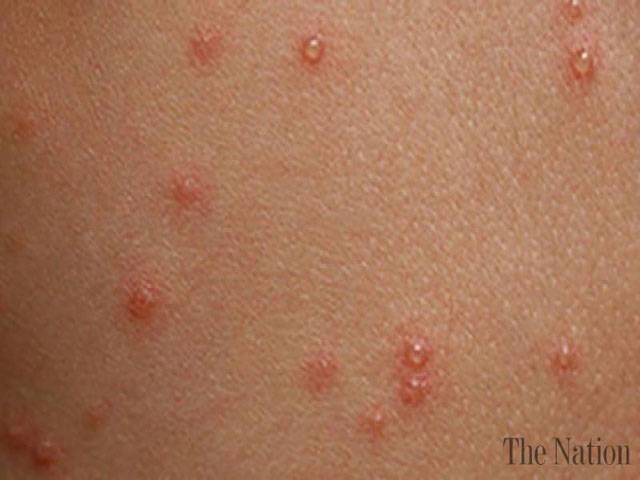LAHORE - Reporting of a large number of chickenpox cases across the province even during off season has raised alarm among citizens and health mangers.
More than 120 cases of chickenpox were reported in the province during the last month. One person lost his life in Faisalabad due to chickenpox-related complication.
Chickenpox is infection normally occurring during spring. Emergence of such a large number of cases in winter (off season) has caused the Directorate General of Health Services, Punjab to approach high ups of the Specialised Healthcare and Medical Education Department with the suggestion to take measures to control the infection and treat chickenpox patients.
In a letter written to the secretary of SH&ME, director general (health) has given district-wise data of Varicella Zoster Infection (chickenpox) cases with suggestion of case management as per recommendations of WHO. The DG also said that sufficient stock of vaccines was available in all districts. Highest number of chickenpox has been reported in Muzaffargarh (41) followed by Attock (37) this winter. Five chickenpox cases have been reported in the provincial metropolis.
Doctors say fatalities are rare in chickenpox cases. Timely diagnosis and early treatment is vital to save lives. A lack of treatment or secondary infections could prove fatal.
Symptoms include appearance of blisters and rashes, body ache, high fever ranging from 100 to 105 F and sore throat. Blisters could be filled with water in some cases.
The incubation period of the disease is 14 to 21 days. In males above 13 years, complications can result in inflammation of the testes that may lead to sterility. The patient must be kept in complete isolation until blisters dry up. If diagnosed early, the disease can be controlled to a large extent. Those who get chickenpox develop immunity against the virus.
Vericella Zoster Virus enters through the respiratory system, targeting the skin and peripheral nerve. The period of illness is from 3 to 4 days. One to two days before the rashes appear, is when this virus is the most contagious. Some signs and symptoms are vesicles that fill with pus, rupture, and scab before healing. Lesions tend to stay towards the face, throat, and lower back sometimes on the chest and shoulders.
In about 10–20 percent of cases, VZV reactivates later in life, producing a disease known as shingles or herpes zoster. VZV can also infect the central nervous system.






